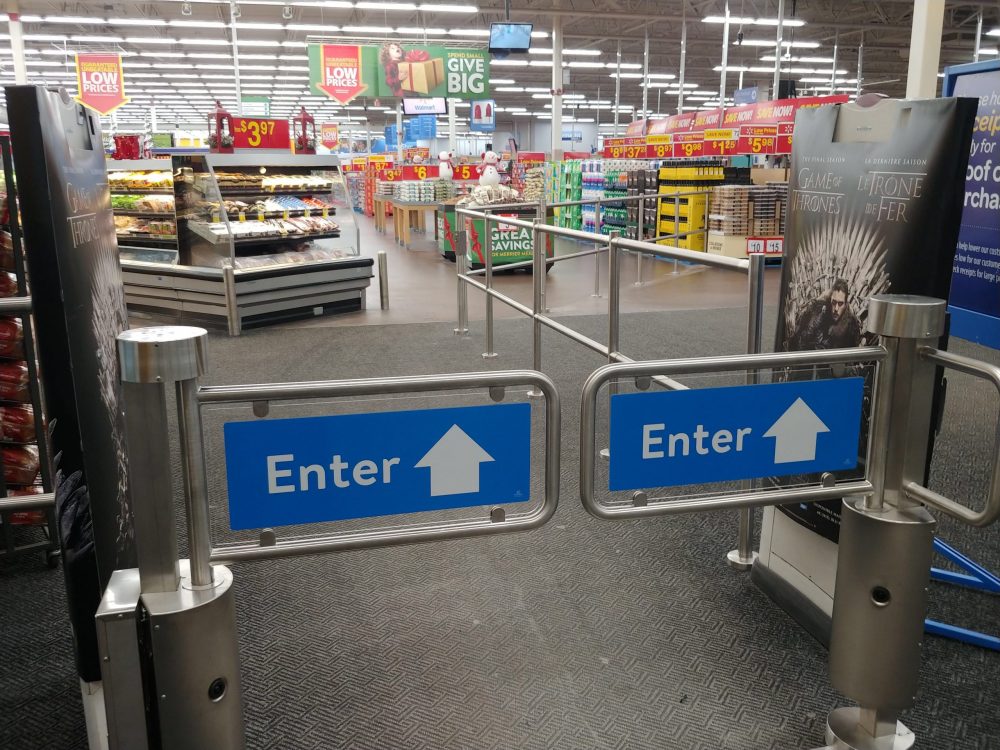Toronto Police Services Shop-Theft Protocol
So you may have heard the news? Toronto Police Service is testing a new program whereby they no longer respond to shoplifting calls.
Well, it isn’t completely accurate and while it might be easy to just say “you have nothing to worry about”, it does convey a false message to would-be thieves, and you may not have to worry, but you probably need to react
Toronto Police Services launched this program at the beginning of November in 2 key police divisions, which follows other areas of the country regarding how Police respond to shoplifting. This is not the first program of this nature in Canada though, Peel has been operating this way for years.
While it may have appeared to be a “carte blanche” announcement for shoplifters, businesses need to take a look behind the curtains to see the full story.
First, and most importantly, “shoplifting” is a still a crime, the law did not change. A person can be charged (and convicted) for theft under $5000, or theft over $5000. There is also an assortment of other offences that can be tied to a crime against retailers depending on the circumstances.
What TPS did is change a Police process for how THEY respond to calls once a shoplifter is detained by a storekeeper or their security staff.
It may save retailers time if the retail processes a lot of cases, yet does not insist on taking the case forward to criminal court. They are simply following the “existing” (and in the case of the jurisdiction where the pilot is being launched, they “old”) process where they must run the criminal over to Police.
Many retailers have called Bottom Line Matters to ask about this change, in somewhat of a panic.
Feel free to read on for the backstory or simply rely on the bottom line – the law did not change and if you stop somebody for shoplifting and wish to see it through to prosecution that is your right and you can make it happen.
Fair enough, let’s now look at how this change is actually beneficial.
Shrink
Shrink is the means of measurement for most midsize and large retailers regarding their losses and their loss prevention program. It is estimated to be around 1.4% of sales per year, calculated using retail counting methodology.
As a small business owner, you may not need to conduct an inventory before you know you are being ripped off, but if you want to see how you compare, 1.4% is the going rate. Anything higher should be addressed immediately.
Rights of Business Owner
A business owner has the right to protect their assets if shrink is caused by crime. They have a right, and in fact, a legal obligation to provide a safe environment for their workers, so if the criminal element comes into their store, yes they can act on this, and yes they can request the services of police to help.
The Law
A person can arrest any other person they find committing a criminal offence, so yes a business owner can arrest a shoplifter. Once they do however they must forthwith deliver the person to a Peace Officer. That means they have to call the police, and this is where the change in Toronto affects next steps, Police do not have to attend.
Trespass to Property
Your business is not public property. You have an open invitation to the public but you are still the owner or renter of the building. You can revoke the invitation by way of a trespass notice (Quebecers, sorry, this does not apply to you, there are tight rules around this).
If you catch a shoplifter, in Toronto, where Police are not insisting to shop up – Trespass the person! If you allow them that first chance, make sure they don’t get a second one. If you suspect a repeat offender but can’t catch them, you may want to consider using the Trespass to Property Act cautiously.
Public Shaming
This is a controversial topic for business owners. Recent media reports highlight small business owners who publicly shame shoplifter by posting pictures in stores and circulating them on social media. Bottom Line – It’s not legal. media do not have an obligation to tell you that, and Police do not “police” this law, but it is against the Privacy Act, so read up on PIPEDA by doing a Google search, or reading my other articles on Privacy.
Police Resources
The reason this new initiative is welcomed by many is quite frankly because Police resources are strapped, and having a cop on the street looking for the dangerous criminals, is viewed by all as more beneficial to the administrative duties of processing shoplifters.
The Justice of the Peace
Anyone has the right to swear to a complaint directly with a Justice of the Peace and have a shoplifter charged, and brought before the Courts without Police charging the person. This is a little-known system in the business community, but you actually don’t have to have Police charge a person directly, so if they don’t show up, yes the shoplifter can still see the light of day of a courthouse if you so choose.
Criminal prosecution
Here’s the bottom line, shoplifter cases by far never see the “fullest extent of the law”. I don’t know of any common shoplifter in prison. But if we can take a look back quickly at history, you will see how we got to where we are. In the late ‘90s, a case was argued by a person awaiting trial for murder. He said his rights were breached because he waited too long for a trial. He won.
In response to the Charter of Rights concern raised above, the Courts dismissed thousands of cases that were creating the backlog. Most were gateway crimes like shoplifting.
In anticipation of creating another backlog, a program was designed to divert cases from Courts – so shoplifters never did see a Judge. The Toronto program is simply moving the step of diversion closer to the event, instead of sending them to the Crown Attorney, they are doing the work over the phone when you call in a complaint.
Diversion
The Diversion programs are not quite as simple as I just described, but for the most part the way they work is that the offender must own up to the crime, and they can then be subject to a number of different steps that might help them see the light; doing some community service, paying restitution, writing a letter of apology to the victim etc…
Civil Recovery
Civil Recovery is using a different stream of justice, so rather than criminal prosecution, the Civil Code its used in Quebec, and Common Law is used for the rest of Canada. nIn essence you are suing the person. The threshold is different for criminal and civil streams *recall the OJ case. so a person can be sued successfully, but not criminally convicted.
Many retailers use this method as a response and deterrent measure for shoplifters.
The Toronto program as you can see is not a free ride for shoplifters. If you have a repeat offender and catch them stealing and insist Police attend, let them know, and they will come. The program is meant to alleviate an overburdened part of Policing so cops can get back on the streets to make out communities safe.
How you structure your own response to shoplifting is based on what works for you, this chance simply opens up more options for the Loss Prevention Community.





